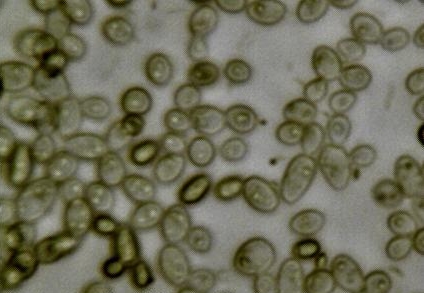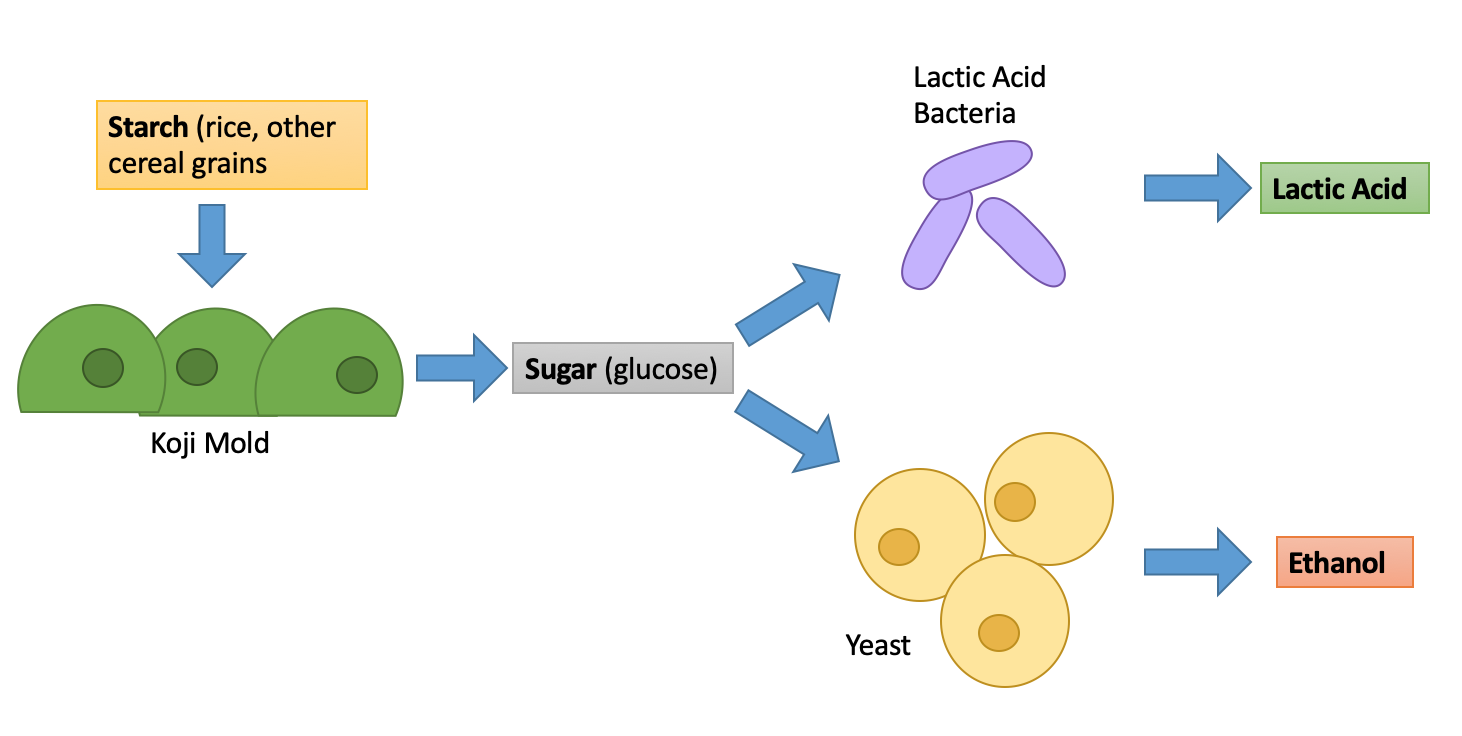|
Kombucha
Kombucha (also tea mushroom, tea fungus, or Manchurian mushroom when referring to the culture; Latin name ''Medusomyces gisevii'') is a fermented, lightly effervescent, sweetened black tea drink commonly consumed for its purported health benefits. Sometimes the beverage is called kombucha tea to distinguish it from the culture of bacteria and yeast. Juice, spices, fruit or other flavorings are often added. Kombucha is thought to have originated in China, where the drink is traditional. By the early 20th century it had spread to Russia, then other parts of Eastern Europe and Germany. Kombucha is now homebrewed globally, and also bottled and sold commercially. The global kombucha market was worth approximately billion . Kombucha is produced by symbiotic fermentation of sugared tea using a ''symbiotic culture of bacteria and yeast'' ( SCOBY) commonly called a "mother" or "mushroom". The microbial populations in a SCOBY vary. The yeast component generally includes ''Sacchar ... [...More Info...] [...Related Items...] OR: [Wikipedia] [Google] [Baidu] |
SCOBY
Symbiotic culture of bacteria and yeast (SCOBY) is a culinary symbiotic fermentation culture ( starter) consisting of lactic acid bacteria (LAB), acetic acid bacteria (AAB), and yeast which arises in the preparation of sour foods and beverages such as kombucha. Beer and wine also undergo fermentation with yeast, but the lactic acid bacteria and acetic acid bacteria components unique to SCOBY are usually viewed as a source of spoilage rather than a desired addition. Both LAB and AAB enter on the surface of barley and malt in beer fermentation and grapes in wine fermentation; LAB lower the pH of the beer while AAB take the ethanol produced from the yeast and oxidize it further into vinegar, resulting in a sour taste and smell. AAB are also responsible for the formation of the cellulose SCOBY. In its most common form, SCOBY is a gelatinous, cellulose-based biofilm or microbial mat found floating at the container's air-liquid interface. This bacterial cellulose mat is sometimes calle ... [...More Info...] [...Related Items...] OR: [Wikipedia] [Google] [Baidu] |
Yeast
Yeasts are eukaryotic, single-celled microorganisms classified as members of the fungus kingdom. The first yeast originated hundreds of millions of years ago, and at least 1,500 species are currently recognized. They are estimated to constitute 1% of all described fungal species. Yeasts are unicellular organisms that evolved from multicellular ancestors, with some species having the ability to develop multicellular characteristics by forming strings of connected budding cells known as pseudohyphae or false hyphae. Yeast sizes vary greatly, depending on species and environment, typically measuring 3–4 µm in diameter, although some yeasts can grow to 40 µm in size. Most yeasts reproduce asexually by mitosis, and many do so by the asymmetric division process known as budding. With their single-celled growth habit, yeasts can be contrasted with molds, which grow hyphae. Fungal species that can take both forms (depending on temperature or other conditions) a ... [...More Info...] [...Related Items...] OR: [Wikipedia] [Google] [Baidu] |
Probiotic
Probiotics are live microorganisms promoted with claims that they provide health benefits when consumed, generally by improving or restoring the gut microbiota. Probiotics are considered generally safe to consume, but may cause bacteria- host interactions and unwanted side effects in rare cases. There is some evidence that probiotics are beneficial for some conditions, but there is little evidence for many of the health benefits claimed for them. The first discovered probiotic was a certain strain of bacillus in Bulgarian yoghurt, called ''Lactobacillus bulgaricus''. The discovery was made in 1905 by Bulgarian physician and microbiologist Stamen Grigorov. The modern-day theory is generally attributed to Russian Nobel laureate Élie Metchnikoff, who postulated around 1907 that yoghurt-consuming Bulgarian peasants lived longer. A growing probiotics market has led to the need for stricter requirements for scientific substantiation of putative benefits conferred by microorgan ... [...More Info...] [...Related Items...] OR: [Wikipedia] [Google] [Baidu] |
Symbiotic Fermentation
Symbiotic fermentation is a form of fermentation in which multiple organisms (yeasts, acetic acid bacteria, lactic acid bacteria and others) interact in symbiosis in order to produce the desired product. For example, a yeast may produce ethanol, which is then consumed by an acetic acid bacterium. Described early on as the fermentation of sugars following saccharification in a mixed fermentation process. History The earliest mention of the term can be found in a lecture given by Dr. Allan Macfadyen of the Jenner Institute of Preventative Medicine in 1902. Dr. Macfadyen described symbiotic fermentation as noting "a close relationship between the organisms at work, the action of one aiding or modifying the action of the other, whilst both members are more active as a results of the partnership." Fermentative microorganisms have had a deep history as seen by kefir and kumis fermentations of milk by Nomadic tribes in Russia, as well as Japanese koji fermentation (see ''Aspergillus oryz ... [...More Info...] [...Related Items...] OR: [Wikipedia] [Google] [Baidu] |
Fermented Beverage
This is a list of fermented foods, which are foods produced or preserved by the action of microorganisms. In this context, fermentation typically refers to the fermentation of sugar to alcohol using yeast, but other fermentation processes involve the use of bacteria such as lactobacillus, including the making of foods such as yogurt and sauerkraut. Many fermented foods are mass produced using industrial fermentation processes. The science of fermentation is known as zymology. Many pickled or soured foods are fermented as part of the pickling or souring process, but many are simply processed with brine, vinegar, or another acid such as lemon juice. __TOC__ Fermented foods Fermented beans and seeds Fermented cheeses Most cheeses (all but fresh cheeses) are fermented as part of their production. Fermented condiments Fermented creams and yogurts Fermented grains and grain-based foods Fermented fruits and vegetables Fermented meat and seafood ... [...More Info...] [...Related Items...] OR: [Wikipedia] [Google] [Baidu] |
Gluconacetobacter Xylinus
''Komagataeibacter xylinus'' is a species of bacteria best known for its ability to produce cellulose, specifically bacterial cellulose. History and taxonomy The species was first described in 1886 by Adrian John Brown, who identified the bacteria while studying fermentation. Brown gave the species the name ''Bacterium xylinum''. It has since been known by several other names, mainly ''Acetobacter xylinum'' and ''Gluconacetobacter xylinus''. It was given its current name, with the establishment of the new genus '' Komagataeibacter'', in 2012. It is the type species of the genus. Genome and metabolism ''K. xylinus'' is a member of the acetic acid bacteria, a group of Gram-negative aerobic bacteria that produce acetic acid during fermentation. ''K. xylinus'' is unusual among the group in also producing cellulose. Bacterial cellulose (also sometimes known as nanocellulose) is involved in the formation of biofilms. It is chemically identical to plant cellulose, but has distinct phys ... [...More Info...] [...Related Items...] OR: [Wikipedia] [Google] [Baidu] |
Kefir
Kefir ( ; also spelled as kephir or kefier; ; ; ) is a fermented milk drink similar to a thin yogurt or ayran that is made from kefir grains, a specific type of mesophilic symbiotic culture. The drink originated in the North Caucasus, in particular the Elbrus region along the upper mountainous sections of Circassia, Karachay and Balkaria, from where it came to Russia, and from there it spread to Europe and the United States, where it is prepared by inoculating the milk of cows, goats, or sheep with kefir grains. Kefir is a breakfast, lunch, and dinner drink popular across Russia, Belarus, Estonia, Hungary, Latvia, Lithuania, Poland, Romania, and Ukraine - where it is known as an affordable health drink. It is also known in Norway, Sweden, and Finland, where buttermilk-type fermented dairy drinks are common. Kefir is common particularly among Russian and Estonian minorities. In South Slavic countries, kefir is consumed at any time of the day, especially with zelnik/zel ... [...More Info...] [...Related Items...] OR: [Wikipedia] [Google] [Baidu] |
Water Kefir
Tibicos, or water kefir, is a traditional fermented drink made with water and a symbiotic culture of bacteria and yeasts (SCOBY) held in a polysaccharide biofilm matrix created by the bacteria. It is sometimes consumed as an alternative to milk-based probiotic drinks or tea-cultured products such as kombucha. Water kefir is typically made as a probiotic homebrew beverage. The finished product, if bottled, will produce a carbonated beverage. Cultures Tibicos cultures are found around the world, with no two being exactly the same; but typical tibicos have a mix of ''Lactobacillus'', ''Streptococcus'', ''Pediococcus'' and ''Leuconostoc'' bacteria, with yeasts from ''Saccharomyces'', '' Candida'', ''Kloeckera'' and possibly others. ''Lactobacillus brevis'' bacteria has been identified as the species responsible for the production of the dextran polysaccharide that forms the "grains." As with milk kefir "grains", the microbes present in tibicos act in symbiosis to maintain a st ... [...More Info...] [...Related Items...] OR: [Wikipedia] [Google] [Baidu] |
Evidence-based Medicine
Evidence-based medicine (EBM) is "the conscientious, explicit and judicious use of current best evidence in making decisions about the care of individual patients". The aim of EBM is to integrate the experience of the clinician, the values of the patient, and the best available scientific information to guide decision-making about clinical management. The term was originally used to describe an approach to teaching the practice of medicine and improving decisions by individual physicians about individual patients. Background, history and definition Medicine has a long history of scientific inquiry about the prevention, diagnosis, and treatment of human disease. The concept of a controlled clinical trial was first described in 1662 by Jan Baptist van Helmont in reference to the practice of bloodletting. Wrote Van Helmont: The first published report describing the conduct and results of a controlled clinical trial was by James Lind, a Scottish naval surgeon who conducted re ... [...More Info...] [...Related Items...] OR: [Wikipedia] [Google] [Baidu] |
Biofilm
A biofilm comprises any syntrophic consortium of microorganisms in which cells stick to each other and often also to a surface. These adherent cells become embedded within a slimy extracellular matrix that is composed of extracellular polymeric substances (EPSs). The cells within the biofilm produce the EPS components, which are typically a polymeric conglomeration of extracellular polysaccharides, proteins, lipids and DNA. Because they have three-dimensional structure and represent a community lifestyle for microorganisms, they have been metaphorically described as "cities for microbes". Biofilms may form on living or non-living surfaces and can be prevalent in natural, industrial, and hospital settings. They may constitute a microbiome or be a portion of it. The microbial cells growing in a biofilm are physiologically distinct from planktonic cells of the same organism, which, by contrast, are single cells that may float or swim in a liquid medium. Biofilms c ... [...More Info...] [...Related Items...] OR: [Wikipedia] [Google] [Baidu] |
Osmophilic
An osmophile is a microorganism adapted to environments with high osmotic pressures, such as high sugar concentrations. Osmophiles are similar to halophiles (salt-loving organisms) in that a critical aspect of both types of environment is their low water activity, aW. High sugar concentrations represent a growth-limiting factor for many microorganisms, yet osmophiles protect themselves against this high osmotic pressure by the synthesis of osmoprotectants such as alcohols and amino acids. Many osmophilic microorganisms are yeast Yeasts are eukaryotic, single-celled microorganisms classified as members of the fungus kingdom. The first yeast originated hundreds of millions of years ago, and at least 1,500 species are currently recognized. They are estimated to constit ...s; some bacteria are also osmophilic. Osmophilic yeasts are important because they cause spoilage in the sugar and sweet goods industry, with products such as fruit juices, fruit juice concentrates, liquid s ... [...More Info...] [...Related Items...] OR: [Wikipedia] [Google] [Baidu] |
Acetic Acid
Acetic acid , systematically named ethanoic acid , is an acidic, colourless liquid and organic compound with the chemical formula (also written as , , or ). Vinegar is at least 4% acetic acid by volume, making acetic acid the main component of vinegar apart from water and other trace elements. Acetic acid is the second simplest carboxylic acid (after formic acid). It is an important chemical reagent and industrial chemical, used primarily in the production of cellulose acetate for photographic film, polyvinyl acetate for wood glue, and synthetic fibres and fabrics. In households, diluted acetic acid is often used in descaling agents. In the food industry, acetic acid is controlled by the food additive code E260 as an acidity regulator and as a condiment. In biochemistry, the acetyl group, derived from acetic acid, is fundamental to all forms of life. When bound to coenzyme A, it is central to the metabolism of carbohydrates and fats. The global demand for acetic aci ... [...More Info...] [...Related Items...] OR: [Wikipedia] [Google] [Baidu] |





.jpg)

%2C_after_2_days.jpg)

